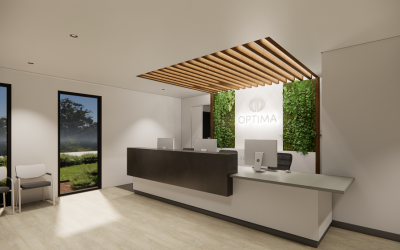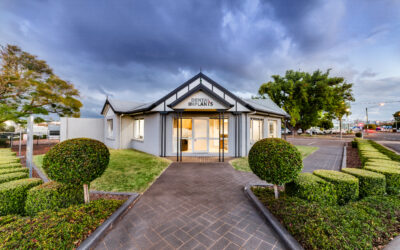The COVID-19 pandemic has impacted nearly all facets of Australian society (and the wider world!). While we have been very fortunate to avoid much of the negative impact that many other countries have experienced, we have unquestionably had to adjust how we live, work, and interact with each other.
The dental industry has not been an exception to the pandemic.
Daily tasks have an added layer of stress in an already tense time. Rather than just getting the appointment time right, a trip to the dentist can now involve asking ourselves: do I have a mask on? Am I 1.5m apart from everyone? Have I sanitised my hands?
While there are now regulations in place to ensure the spread of the virus is minimised, there are factors outside of this that dental practice owners and managers must consider to create an inviting space, and provide an experience that feels as “normal” as possible.
This begins with the dental practice practice waiting room.
Design can play a large role in your patient’s experience, and a well-designed waiting room/reception area can set the tone for their visit, either positively or negatively.
The waiting room has always been an important design consideration for dental practices, serving as the first point of interaction for patients.
This is often the area of the dental practice where people are at their most anxious – even in pre-covid times. Couple this with the new pandemic protocols in place and suddenly, your dental practice may be a less-than-enjoyable environment for most visitors.
Here are some considerations for creating an inviting space through the design of your waiting room in a globally challenging time.
Layout
The layout of your dental practice waiting room is an important consideration for a positive experience in 2021. Allocate enough space for your patients to wait comfortably, not sitting crammed in a small area together. No one enjoys the feeling of sitting shoulder to shoulder with others in normal scenarios, let alone during a global pandemic.
The ‘flow’ from the reception area to other areas of the dental practice is crucial. Whether it’s from the front entrance to the reception desk, from the desk to the seating area, or from the waiting area to procedure rooms, it’s important that people can move freely between areas without encroaching on each other’s personal space.
First Impression
General public sensitivity of cleanliness has been heightened during COVID. In an environment that is expected to be sterilised at all times, it is even more essential that your waiting room is always in pristine order.
Design can also produce perceived cleanliness. A clean and fresh looking reception and waiting area will help patients entering your practice feel at ease, while portraying your professionalism and level of care.
First impressions can make or break any business. As well as providing your patients with an enjoyable visit, your waiting room design is an opportunity for you to show people who you are as a professional, and what your brand stands for.
Technology
Dental practices are fast adopting and utilising technology as a calming influence throughout their spaces. In waiting rooms, the addition of a cleverly placed TV screen can assist in relieving patient anxiety, as well as passing the time faster and forgetting the stress of sharing a facility during their waiting time.
For new patients in the pandemic era, getting them to fill out required forms via the website prior to their appointment can streamline the process, removing one extra step touchpoint and stress.
What’s Trending? Biophilic Design
Biophilic design brings our human connection to the outdoor/natural world to the indoor, built environment. In sterile healthcare-based environments, this connection can be easily lost and replaced with coldness in a constructed space.
Research has proven the positive effects that indoor environments that mimic nature have on overall health and well-being. Adding biophilic elements to interiors can reduce stress, blood pressure and heart rates—while increasing productivity, creativity and overall well-being.
How do you do integrate biophilia? While the addition of a potted plant or two is a good start, biophilic design goes deeper than this. Natural light, vegetation, living walls, natural textures and materials, garden views and colour palettes can provide a positive impact on both staff and patients.
Bringing the outside into your waiting room may be simpler than you think.



